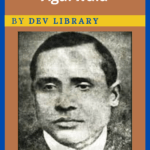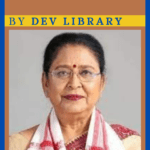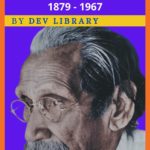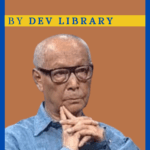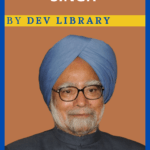Vinayak Damodar Savarkar was a strong leader and an Indian politician, activist, a writer and a remarkable figure who propels Hindu nationalist ideals. He was a leader of Hindu Mahasabha.
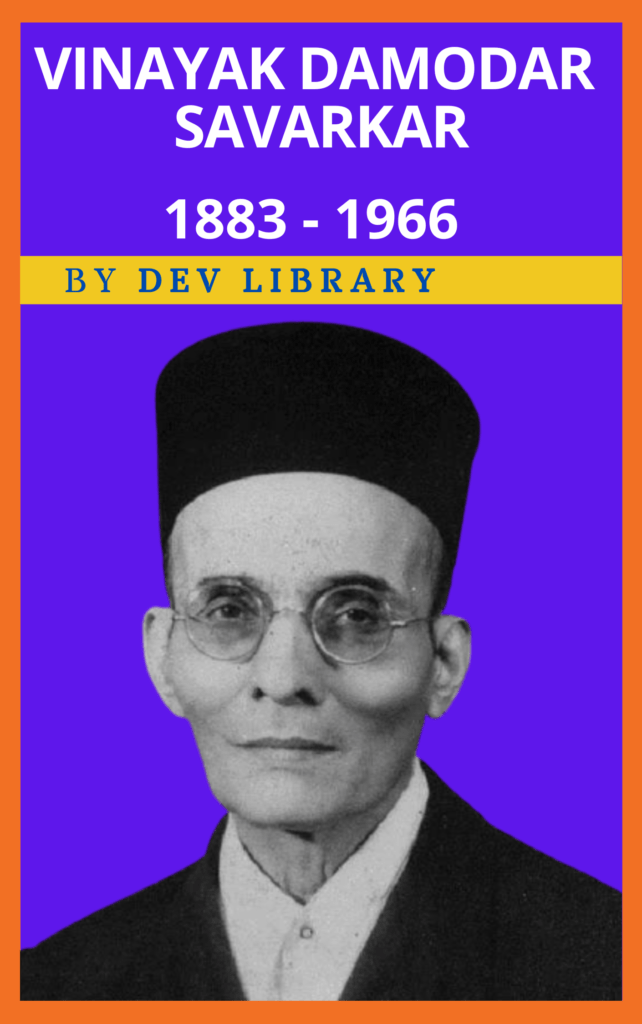
Biography of Vinayak Damodar Savarkar
| Name | Vinayak Dmodar Savarkar[1] |
| Date of Birth | May 28, 1883 |
| Place of Birth | Nasik, Maharashtra, India |
| Father’s Name | Damodar Savarkar |
| Mother’s Name | Radhabai Savarkar |
| Spouse | Yamunabai |
| Education | 1/ Fergusson College 2/ Gray’s Inn Law College |
| Political Party | Hindu Mahasabha |
| Death | February 26, 1966 (age 82) |
Early life and education career of Vinayak Damodar Savarkar
Vinayak Damodar Savarkar, a prominent leader of India’s independence movement, a politician, and a prominent figure in the Hindu Mahasabha, was born on May 28, 1883, in a Marathi Chitpavan Brahmin Hindu family in Bhagur village near Nasik in Maharashtra. Vinayak Damodar Savarkar’s father’s name is Damodar Savarkar and mother’s name is Radhabai Savarkar. He have three siblings name Ganesh, Narayan and a sister name Maina.
Savarkar began his activism when he was at high school. It was around 1893 when Savarkar was 10-12 years old communal clashes broke out in Bombay. Hindus were persecuted as a result of clashes between Hindus and Muslims. This incident affected Savarkar’s childish mind and made him strong to take revenge against it. He led his fellow students in an attack on his village mosque following Hindu-Muslim riots. Savarkar tore down the windows and tiles of a mosque with the help of his teammates.
It is to be noted that Vinayak Damodar Savarkar graduated from Fergusson College in Pune. Savarkar went to London for his further studies. While studying in London, he took shelter at The India House. Importantly, Veer Savarkar, during his stay in London, inspired Indian student classmates to form a ‘Free India Society’ to fight for India’s independence against the British. In London he involved himself with the organizations such as Indian House and the Free India Society. He also published various books advocation complete Indian independence. One of the books he published named “The Indian War of Independence” about the Indian Rebellion of 1857 was completely banned by the British colonial authorities. During his stay in London, Savarkar translated Mazzini’s biography in Marathi. He also influence the thinking of his fellow students mainly Madanlal Dhingra. In 1909, Dhingra assassinated Curzon-Wylie, a colonial officer. Savarkar met Mohandas Karamchand Gandhi for the first time in London, shortly after Curzon-Wylie’s assassination. During his stay, Gandhi debated Savarkar and other nationalists in London on the futility of fighting the colonial state through acts of terrorism and guerilla warfare.
Also Read: Biography of Pamulaparthi Venkata Narasimha Rao
Activism
Savarkar started his political activism as a student at Fergusson College in Pune. Savarkar was greatly influenced by Nationalist leader, Lokmanya Tilak. Tilak helped Savarkar to obtain the Shivaji Scholarship in 1906 for his law studies in London. It is important to note that while studying at Fergusson College, he played an important role in the formation of the Secret Society. Apart from this, he also published a handwritten weekly magazine called ‘Aryan Weekly’ in which he published articles on various aspects of literature, history, science, etc. along with various patriotic works.
Socially conscious Savarkar has often participated in academic discussions and debates on world history, Italy, Netherlands and American revolutions, as well as to restore India’s lost independence, Savarkar gave his colleagues various views on how they have revolutionized for the various problems and freedoms faced by the subjugated countries. In addition to these, Savarkar appealed to the entire countrymen to refrain from buying foreign goods in parallel with calling upon the entire countrymen to arrive at a consensus against the British. Importantly, in the early 19th century, he was instrumental in building an organizational force called Mitra Mela with selected youth. Later this Mitra Mela was converted into Abhinav Bharat Society in 1904. It is to be noted that the branch of The Abhinav Bharat Society spread all over west and central India.
Arrest and Transformation to India
Importantly, an Indian man named Ganesh Savarkar led an armed rebellion opposing the Morley-Minto reforms of 1909. Vinayak Damodar Savarkar was also considered as an accused by the British government for participating in this armed rebellion. Hoping to escape from arrest Vinayak Damodar Savarkar took shelter at the residence of Madame Bhikaiji Cama’s house in Paris. However, on March 13, 1910, the police arrested Vinayaka Damodar Savarkar. He was arrested in London on multiple charges. At the time of his arrest he was carrying several revolutionary texts, including copies of his own banned books. It may be recalled that Vinayaka Damodar Savarkar had planned to escape from jail during his imprisonment. Although he did not succeed in this plan, Savarkar was again arrested by the British government when he fled. Significantly, this incident of Vinayaka Damodar Savarkar was also doing the rounds in international circles. Savarkar, who was sentenced to 50 years of imprisonment by the court, was released in 1924 after a series of mercy petitions, but the court set certain conditions for him to remain within the boundaries of Ratnagiri district amid many restrictions.
Interestingly, while in jail, Vinayak Damodar Savarkar wrote a book called “Essentials of Hindutva” in 1922. It may be recalled that Savarkar, who was confined to Ratnagiri district till 1937, was unconditionally released by the newly elected government of Bombay presidency at that time. After his release from jail, Savarkar actively took up various programmes to promote Hindu culture and philosophy.
Vinayak Damodar Savarkar as a leader of the Hindu Mahasabha
Vinayak Damodar Savakar, who served as president of the Hindu Mahasabha during World War II in 1939, promoted the slogans of “Hinduize all Politics and Militarize Hindudom”, providing military training to the Hindu people and supporting the British. When the Congress launched the 1942, Quit India Movement, he strongly criticized the Quit India Movement that started against the British and asked Hindus to stay active in the war effort and not disobey the government, he also urged the Hindus to enlist in the armed forces to learn the “arts of war”. It is to be noted that the Hindu Mahasabha under the leadership of Vinayak Damodar Savarkar had also opposed the principles of the Quit India Movement and boycotted the programs of the movement. Savarkar advised his followers and members of the Hindu Mahasabha not to take part in the agitation for any reason. Savarkar even wrote a letter titled “Stick to your Posts”.
In the 1937 Indian provincial elections, the Indian National Congress defeated the Muslim League and the Hindu Mahasabha by a huge margin, but in 1940, congress ministers resigned in protest against the Viceroy Lord Linlithgow’s decision to declare war on Germany without India’s consent. Subsequently, this led to the Hindu Mahasabha, under the chairmanship of Savarkar, the Hindu Mahasabha, along with the Muslim League and other parties, formed the government in many provinces. Such coalition government were formed in Sindhi, NWFP, and Bengal.
Significantly, after the assassination of Mahatma Gandhi on January 30, 1948, the killer Nathuram Godse and his associates and conspirators were detained by the police. He was a member of the Hindu Mahasabha and the Rashtriya Swayamsevak Sangh. Importantly, after Gandhi’s assassination, angry mobs pelted stones at Savarkar’s house in Dadar, Bombay. The police arrested Vinayak Damodar Savarkar from his home in Shivaji Park on February 5, 1948 and sent to Arthur Road Prison in Bombay. Savakar was charged with murder, and abetment to murder. It may be recalled that a day before his arrest, Vinayak Damodar Savarkar, in a public written statement published in The Times of India in Bombay, had termed Gandhi’s assassination as a fratricidal offence. Subsequently, the large quantity of papers seized from Vinayaka Damodar Savarkar’s house revealed nothing connection between Gandhi’s assassination. Savarkar was arrested under the Preventive Detention Act due to lack of evidence.
Godse claimed full responsibility for planning and carrying out the assassination. The government released Savarkar from jail after being acquitted of charges related to Gandhi’s assassination only after promising to give up political activities altogether. Since then Savarkar has discussed the social and cultural aspects of Hindutva. After the subsequent lifting of the ban on political activities, Savarkar was again involved in political activities.
Books written by Savarkar
Apart from this, Vinayak Damodar Savarkar wrote 38 books in English and Marathi, consisting of many essays, Savarkar has authored two novels, Moplah Rebellion and The Transportation, as well as many poems and plays. Savarkar’s most popular book on various works is The Indian War of Independence, 1857 and his pamphlet Hindutva, set against the backdrop of historical studies : Who Is a Hindu?
Death
On November 8 1963, Savarkar’s wife Yamunabai, died and on 1 February 1966, Savarkar renounced medicines, food, and water which he termed as “Atmaarpan”. He fasted until his death. On 26 February 1966 at his residence in Bombay he faced difficulty in breathing and was declared death at 11:10 am. Before his death he had written an article titled “Atmahatya Nahi Atmarrpan” in which he argued that when one’s life mission is over and the ability to serve the society is left no more, it is better to end the life at will rather than waiting for death. His condition became worsen and extremly serious before his death on 26 February 1966.
FAQ’s
1. When and where was Vinayak Damodar Savarkar born?
Ans: Vinayak Damodar Savarkar was born on May 28, 1883, in a Marathi Chitpavan Brahmin Hindu family in Bhagur village near Nasik in Maharashtra.
2. What is the name of Vinayak Damodar Savarkar’s father and mother?
Ans: Vinayak Damodar Savarkar’s father’s name is Damodar Savarkar and mother’s name is Radhabai Savarkar.
3. When did Vinayak Damodar Savarkar died?
Ans: Vinayak Damodar Savarkar, a proponent of Hindutva, died on February 26, 1966.
4. How did The Hindutva ideology took shape in Vinayak Damodar Savarkar’s mind?
Ans: Vinayak Damodar Savakar was around 10 or 12 years old when communal clashes broke out in Bombay in1893. Hindus were persecuted as a result of clashes between Hindus and Muslims. The incident took a toll on Savarkar’s childish mind and made him strong to take revenge against it. He led his fellow students in an attack on his village mosque following Hindu-Muslim riots. Savarkar tore down the windows and tiles of a mosque with the help of his teammates. This is how Hindutva thoughts were formed in his mind.

Hi, I’m Dev Kirtonia, Founder & CEO of Dev Library. A website that provides all SCERT, NCERT 3 to 12, and BA, B.com, B.Sc, and Computer Science with Post Graduate Notes & Suggestions, Novel, eBooks, Biography, Quotes, Study Materials, and more.


